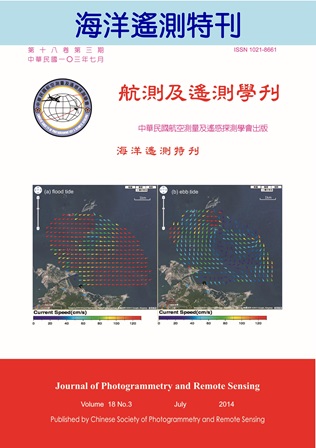Bathymetric Lidar utilizes laser and scanning mechanism for measurement. From the recorded return signal of laser pulse, which is affected by both media and boundary between media layers, not only the water depth, but also the substrate information could be collected. This study explores the potential of substrate classification with reflectivity derived from AHAB Hawkeye II bathymetric lidar. Object-based classification scheme is adopted. Besides the reflectivity, eight GLCM based textures, namely, mean, variance, homogeneity, correlation, contrast, dissimilarity, entropy, and angular second moment are also computed. Image segmentation is applied for producing objects and then training areas of four classes are selected. The nearest neighbor classifier is applied for classifying the objects. The result is analyzed with Jeffries-Matusita distance, one index for measuring separability. It is shown that all J-M distances between the classes are larger than 1.710, which is larger than the threshold value of .
